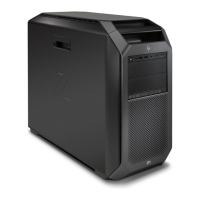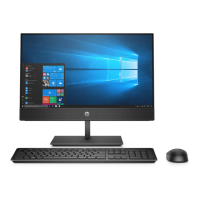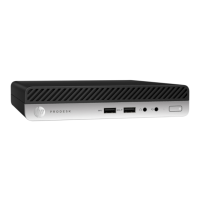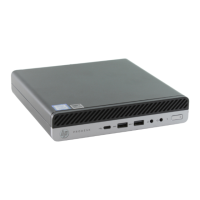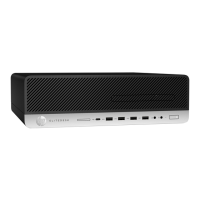Audio
All HP workstations come with built-in audio hardware. The audio hardware is supported by the Advanced Linux
Sound Architecture (ALSA) drivers included with all modern Linux distributions.
The audio hardware provides basic playback and recording features. The ability to simultaneously play audio
from multiple sources, such as applications and CDs, is provided in the ALSA driver that provides audio mixing.
The performance of software audio mixing and playback is greatly improved in ALSA version 1.0.13 and later.
After the driver is installed, the optional NVIDIA and AMD graphics cards that are supported in HP workstations
also provide audio functionality over HDMI. The signal can be passed through the DisplayPort connector to a
monitor with audio capabilities. The vendor driver must be installed. Such a
conguration might present two
audio hardware choices. If you do not hear sound through the speakers, one possible reason is that the graphics
card (default) is selected for audio output instead of the DisplayPort. Check the audio settings (for example,
Sound in gnome-control-center).
In some systems, embedded Intel HD graphics may also present a similar HDMI audio device that can be used
through the DisplayPort interface. No proprietary driver is needed for this device, just a suciently recent kernel.
Network cards
All HP workstations include one or two integrated network interface controllers (NICs). Some support optional
NICs. Most Linux distributions have drivers for these interfaces.
Hyper-Threading Technology
The Z Series Workstations support Hyper-Threading Technology (HTT), an Intel technology that improves
processor performance by enabling the processor to simultaneously perform multiple tasks. The operating
system treats an HTT-enabled processor as two virtual processors and shares the workload between them when
possible. This feature can be used only if the operating system support multiple processors and is s pecically
optimized for HTT.
To enable HTT:
1. During startup, press F10 to enter Computer Setup (F10) Utility.
2. Select Advanced > System Options.
3. Set Intel Hyperthreading to Enable, and then press F10 to exit the menu.
4. Select Main > Save Changes and Exit.
5. Restart the system to enable HTT.
NOTE: On most recent Linux distributions, the kernel automatically detects that HTT is enabled and
works correctly.
106 Appendix D Linux technical notes

